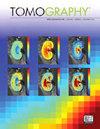Dedicated Cone-Beam Breast CT: Reproducibility of Volumetric Glandular Fraction with Advanced Image Reconstruction Methods
IF 2.2
4区 医学
Q2 RADIOLOGY, NUCLEAR MEDICINE & MEDICAL IMAGING
引用次数: 0
Abstract
Dedicated cone-beam breast computed tomography (CBBCT) is an emerging modality and provides fully three-dimensional (3D) images of the uncompressed breast at an isotropic voxel resolution. In an effort to translate this modality to breast cancer screening, advanced image reconstruction methods are being pursued. Since radiographic breast density is an established risk factor for breast cancer and CBBCT provides volumetric data, this study investigates the reproducibility of the volumetric glandular fraction (VGF), defined as the proportion of fibroglandular tissue volume relative to the total breast volume excluding the skin. Four image reconstruction methods were investigated: the analytical Feldkamp–Davis–Kress (FDK), a compressed sensing-based fast, regularized, iterative statistical technique (FRIST), a fully supervised deep learning approach using a multi-scale residual dense network (MS-RDN), and a self-supervised approach based on Noise-to-Noise (N2N) learning. Projection datasets from 106 women who participated in a prior clinical trial were reconstructed using each of these algorithms at a fixed isotropic voxel size of (0.273 mm3). Each reconstructed breast volume was segmented into skin, adipose, and fibroglandular tissues, and the VGF was computed. The VGF did not differ among the four reconstruction methods (p = 0.167), and none of the three advanced image reconstruction algorithms differed from the standard FDK reconstruction (p > 0.862). Advanced reconstruction algorithms developed for low-dose CBBCT reproduce the VGF to provide quantitative breast density, which can be used for risk estimation.专用锥形束乳腺CT:用先进的图像重建方法再现体积腺体分数
专用锥束乳房计算机断层扫描(CBBCT)是一种新兴的模式,提供全三维(3D)图像的未压缩的乳房在各向同性体素分辨率。为了将这种模式转化为乳腺癌筛查,正在寻求先进的图像重建方法。由于乳腺x线摄影密度是乳腺癌的一个确定的危险因素,而CBBCT提供了体积数据,因此本研究探讨了体积腺分数(VGF)的可重复性,VGF的定义是纤维腺组织体积相对于除皮肤外的乳腺总体积的比例。研究了四种图像重建方法:解析式Feldkamp-Davis-Kress (FDK)、基于压缩感知的快速、正则化、迭代统计技术(FRIST)、基于多尺度残差密集网络的全监督深度学习方法(MS-RDN)和基于噪声到噪声(N2N)学习的自监督方法。来自106名参与先前临床试验的女性的投影数据集使用这些算法在固定的各向同性体素大小(0.273 mm3)下进行重建。每个重建乳房体积被分割成皮肤、脂肪和纤维腺组织,并计算VGF。四种重建方法的VGF没有差异(p = 0.167),三种高级图像重建算法与标准FDK重建都没有差异(p >0.862)。为低剂量CBBCT开发的先进重建算法可以再现VGF,从而提供定量的乳腺密度,可用于风险评估。
本文章由计算机程序翻译,如有差异,请以英文原文为准。
求助全文
约1分钟内获得全文
求助全文
来源期刊

Tomography
Medicine-Radiology, Nuclear Medicine and Imaging
CiteScore
2.70
自引率
10.50%
发文量
222
期刊介绍:
TomographyTM publishes basic (technical and pre-clinical) and clinical scientific articles which involve the advancement of imaging technologies. Tomography encompasses studies that use single or multiple imaging modalities including for example CT, US, PET, SPECT, MR and hyperpolarization technologies, as well as optical modalities (i.e. bioluminescence, photoacoustic, endomicroscopy, fiber optic imaging and optical computed tomography) in basic sciences, engineering, preclinical and clinical medicine.
Tomography also welcomes studies involving exploration and refinement of contrast mechanisms and image-derived metrics within and across modalities toward the development of novel imaging probes for image-based feedback and intervention. The use of imaging in biology and medicine provides unparalleled opportunities to noninvasively interrogate tissues to obtain real-time dynamic and quantitative information required for diagnosis and response to interventions and to follow evolving pathological conditions. As multi-modal studies and the complexities of imaging technologies themselves are ever increasing to provide advanced information to scientists and clinicians.
Tomography provides a unique publication venue allowing investigators the opportunity to more precisely communicate integrated findings related to the diverse and heterogeneous features associated with underlying anatomical, physiological, functional, metabolic and molecular genetic activities of normal and diseased tissue. Thus Tomography publishes peer-reviewed articles which involve the broad use of imaging of any tissue and disease type including both preclinical and clinical investigations. In addition, hardware/software along with chemical and molecular probe advances are welcome as they are deemed to significantly contribute towards the long-term goal of improving the overall impact of imaging on scientific and clinical discovery.
 求助内容:
求助内容: 应助结果提醒方式:
应助结果提醒方式:


